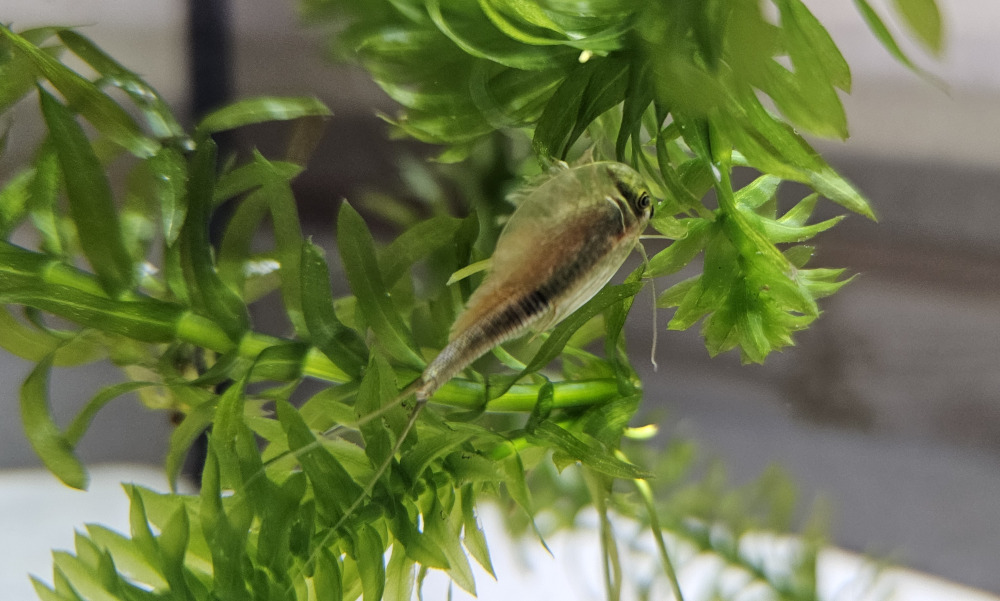Guide
Triops longicaudatus – Did you know THAT about the American crayfish?
Triops are small prehistoric creatures that look as if they have stepped straight out of a prehistoric adventure film. Triops longicaudatus, also known as the American prehistoric crayfish, is one of the oldest living animal species in the world today. And that is no exaggeration: These fascinating crustaceans have existed for around 220 million years and have barely changed in all that time. A real living fossil – and you can observe it in your own home. In this blog article, I explain why the Triops longicaudatus is so unique.

Triops longicaudatus: A life under extreme conditions
Triops are true survival artists. Their habitat is temporary bodies of water in North America – in other words, they live in puddles, pools or rainwater basins that are often only filled with water for a few weeks. This is exactly what makes them so special. This is because they have adapted perfectly to life in extreme conditions: Their eggs, known as permanent eggs, can survive for years in dry soil. As soon as it rains again and water collects, tiny larvae – known as nauplii – hatch within a few hours and life begins again.
Triops longicaudatus wächst unglaublich schnell. Innerhalb weniger Tage entwickeln sich die Nauplien zu beeindruckend agilen Krebsen mit einem schildartigen Panzer, langen Schwanzanhängen und kräftigen Schaufelbeinen, mit denen sie unermüdlich den Bodengrund durchwühlen. Du wirst erstaunt sein, wie aktiv sie sind! Schon nach etwa zwei Wochen sind sie geschlechtsreif – in einer Welt, in der das Wasser bald wieder verschwunden sein kann, ist das eine notwendige Anpassung.
One egg is enough to survive
What is particularly exciting is that most Triops are females, although many animals are hermaphrodites and can also reproduce without a partner. This means that even if only a single egg survives, this is enough to produce a new generation. This type of reproduction, known as parthenogenesis, is another example of the incredible adaptability of these animals.
Wenn Du Dich dazu entscheidest, Triops zu züchten, holst Du Dir ein kleines Stück Urzeit in Dein Zuhause. Die Zucht ist vergleichsweise einfach, erfordert aber ein wenig Geduld und Aufmerksamkeit – besonders in den ersten Tagen nach dem Schlupf. Am besten funktioniert es mit destilliertem oder abgekochtem Wasser, einem kleinen Aufzuchtbecken und etwas Licht. Wichtig ist, dass die Wassertemperatur konstant bleibt, denn Triops sind wärmeliebende Tiere und entwickeln sich bei Temperaturen zwischen 24 und 28 Grad Celsius am besten.
Short life span
What makes Triops longicaudatus so exciting is not only their primeval appearance, but also their behaviour. They tirelessly forage through the substrate, eating everything that gets in their way – dead plant matter, food scraps, small microorganisms. They are curious, active and by no means boring aquarium inhabitants. Sometimes they seem to communicate with each other or fight for territory. Observing their daily activities is a real experience.
Auch wenn ihre Lebensspanne kurz ist – in der Regel etwa 30 bis 90 Tage – hinterlassen sie einen bleibenden Eindruck. Und vor allem hinterlassen sie neue Eier, die Du trocknen und für die nächste Generation aufbewahren kannst. So lebt der Kreislauf weiter – fast wie in der Natur.
Für Kinder, aber auch für Erwachsene, ist die Haltung von Triops eine spannende Möglichkeit, Biologie und Evolution hautnah zu erleben. Du lernst nicht nur, wie faszinierend das Leben in seinen einfachsten Formen sein kann, sondern bekommst auch ein Gespür für Verantwortung, Beobachtung und Geduld.
Triops longicaudatus – Conclusion
Triops longicaudatus is more than just an extraordinary pet – it is a window into the past, a survivor and a real favourite. Once you have seen how a tiny, barely visible egg becomes a living mini-dinosaur that fascinates you with its lightning-fast movements and curiosity, you will understand why so many people are fascinated by these little prehistoric creatures.
Also: Warum nicht selbst ausprobieren? Mit etwas Vorbereitung und Interesse kannst Du schon bald in Deinem Wohnzimmer miterleben, wie das Leben vor hunderten Millionen Jahren ausgesehen haben könnte – und das im Miniaturformat. Triops longicaudatus wartet nur darauf, Dich in seine uralte Welt zu entführen.
- Triops longicaudatus – Did you know THAT about the American crayfish? - 23. April 2025
- Synapsids: Do you know the forgotten rulers of the Permian period? - 21. April 2025
- Happy Easter! - 20. April 2025